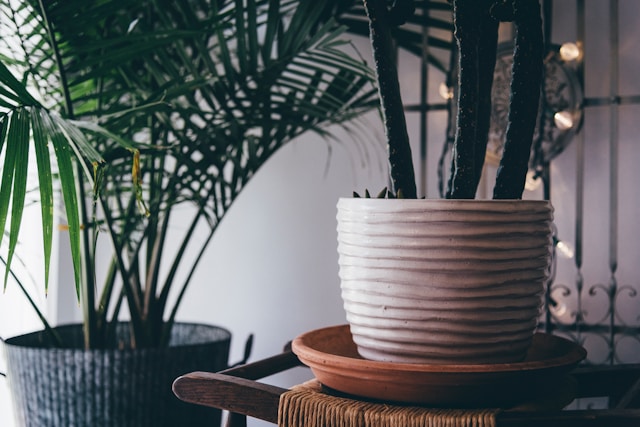Understanding the Side Effects of Indoor Plants
Indoor plants add beauty to your living space, improve air quality, and offer a sense of calm. However, even the most beneficial things can have some drawbacks. It’s essential to recognize the potential side effects of keeping indoor plants so you can enjoy them without issues. Let’s dive deeper into what you should know.
Potential Health Risks
Allergic Reactions
One of the most common side effects of indoor plants is allergies. Plants like peace lilies, rubber trees, and fiddle-leaf figs release pollen or sap that can cause skin irritation, sneezing, or respiratory discomfort in sensitive individuals.
Key Tip: If you have allergies, opt for low-pollen plants such as succulents or cacti.
Toxicity to Humans and Pets
Some indoor plants, such as pothos, philodendrons, or dieffenbachias, are toxic if ingested. This is especially concerning for households with small children or pets. Symptoms may include nausea, vomiting, or skin irritation upon contact.
Solution: Place toxic plants out of reach or choose non-toxic varieties like spider plants or areca palms.
Mold Growth
Indoor plants thrive in moist conditions, but overwatering can lead to mold growth in the soil. Mold spores can become airborne, aggravating asthma or causing respiratory issues in some people.
Prevention: Allow soil to dry between waterings and ensure proper drainage.
Environmental Concerns
Attracting Pests
Indoor plants can sometimes attract unwanted guests like fungus gnats, spider mites, or aphids. These pests not only harm the plants but can also become a nuisance in your home.
Pro Tip: Regularly inspect your plants for pests and use natural remedies like neem oil to deter infestations.
VOC Emission
Surprisingly, some indoor plants release volatile organic compounds (VOCs) into the air. While they’re generally known for purifying air, plants can emit VOCs, particularly at night when photosynthesis halts. This can lead to minor headaches or fatigue in poorly ventilated spaces.
Balanced Approach: Keep plants in well-ventilated areas and avoid overcrowding.
Maintenance Challenges
High Humidity Levels
Plants like ferns and calatheas require high humidity to thrive, but excessive indoor humidity can encourage mold growth and damage wooden furniture or walls.
Fix It: Use a humidity monitor to maintain balanced levels.
Time and Effort
Caring for indoor plants can be time-consuming, especially if you have a large collection. Neglecting plants can lead to wilting or pest problems, defeating the purpose of their presence.
Advice: Start with low-maintenance options like snake plants or ZZ plants if you’re new to gardening.
Specific Side Effects by Plant Type
Peace Lilies
- Can cause skin irritation upon contact.
- Release VOCs at night, which may cause mild discomfort in unventilated spaces.
Rubber Plants
- Emit latex, which can irritate the skin or cause allergic reactions.
- Attract spider mites if overwatered.
English Ivy
- Known for its air-purifying properties but is highly toxic if ingested.
- May cause skin rashes when handled.
Fiddle-Leaf Fig
- Releases a milky sap that can irritate eyes and skin.
- Requires consistent watering, making it prone to mold issues.
How to Minimize Risks
- Choose Wisely: Research plant toxicity before purchasing. Non-toxic options like bamboo palms and parlor palms are safer choices.
- Placement Matters: Keep potentially harmful plants out of reach from children and pets.
- Proper Watering: Avoid overwatering to prevent mold and pest issues. Use pots with drainage holes.
- Ventilation: Ensure good airflow around your plants to minimize VOC buildup.
- Regular Inspection: Check for pests and mold growth weekly. Early detection is key.
Benefits vs. Side Effects
While there are side effects to keeping indoor plants, the benefits often outweigh the risks when managed properly. Indoor plants can reduce stress, boost productivity, and purify air—making them a valuable addition to any home.
By understanding and addressing the potential side effects, you can create a safer and more enjoyable indoor gardening experience.
FAQs About Indoor Plants
1. Are all indoor plants toxic? No, many indoor plants are safe for humans and pets. Research before purchasing to choose non-toxic varieties.
2. Can indoor plants cause respiratory problems? Yes, plants with moldy soil or high pollen release can exacerbate respiratory issues. Proper care minimizes risks.
3. How do I reduce pests in indoor plants? Regularly inspect plants, avoid overwatering, and use natural pest control methods like neem oil.
4. Do indoor plants emit VOCs? Yes, some plants release VOCs, but maintaining good ventilation can offset their effects.
5. How do I choose the right indoor plant? Consider factors like light levels, maintenance requirements, and household safety when selecting plants.

